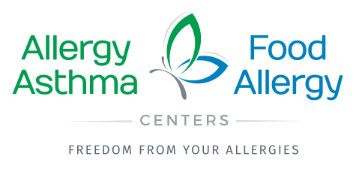We are able to perform a wide variety of tests in our offices, including:
Allergy Skin Testing
Allergy skin testing is performed to evaluate allergic rhinitis (hay fever), asthma, food allergy, stinging insect allergy, some drug allergies, and some allergic skin disorders.
In order to identify what airborne allergens or food substances you are allergic to, we generally perform a prick skin test. This involves applying a small amount of the substance to the skin on the arm or the back using a sterile, plastic device. We use a MultiTest II device which allows us to test up to eight substances at once. A positive test results in an itchy spot about the size of a mosquito bite. The testing procedure takes 15-20 minutes. It is necessary to avoid antihistamines up to one week prior to the testing.
Allergy testing can be done by a blood test as well. Blood testing is generally more expensive, and the results are not available for a week after a blood sample is obtained. In some cases skin testing can identify an allergy that is missed by blood testing. Allergy skin testing also allows us to obtain results and to develop a treatment plan at the time of your visit.
Lung Function Testing
We can perform lung function testing using a device known as a spirometer. This simply involves blowing into a machine as hard and as fast as you can in order to measure your lung capacity and to determine how open your bronchial tubes are. This test is routinely done to diagnose and monitor treatment for asthma and other lung disorders. It is a simple and painless test.
Patch Testing
Patch testing is performed for evaluation of allergic skin disorders known as allergic contact dermatitis. An example of this is poison ivy allergy, or nickel allergy. This test involves applying the test substance to the back with hypoallergenic tape and leaving it in place for 48 hours.
After the test patch is removed from the back, you will need to return in another 24 to 48 hours to read the test site. A positive reaction results in a localized rash at the test site. A positive test allows us to advise you on how to avoid what you are allergic to.
Rhinolaryngoscopy
We will examine your ears, nose and throat as a part of a routine examination. Sometimes areas of the nose and throat are out of the reach of our regular exam tools. In that case we may employ the use of a fiberoptic rhinolaryngoscope to evaluate all of your nasal cavity, throat and larynx to look for sinus infection, nasal polyps, enlarged adenoids or other findings that might explain your symptoms.
We spray the nose with a decongestant and mild topical anesthetic first. This procedure takes about 5 to 10 minutes. Our patients generally describe that this is not a painful procedure.
